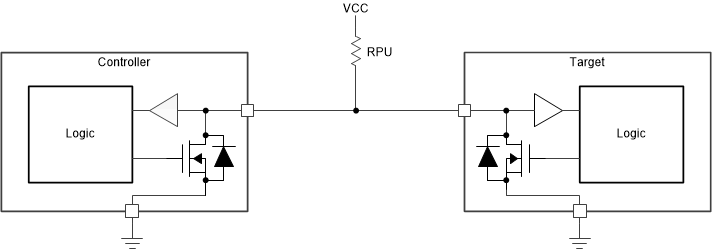SCPA062 July 2021 TCA9517
1 Introduction
I2C is a standard method of communication between multiple ICs within a system. It leverages a bus architecture with a controller device and either a single target or multiple target devices (see Figure 1-1). In some circumstances, the controller device and the target device may use two different voltage levels for I2C communication. In that case, the TCA9517 may be used to properly translate the voltage levels (see Figure 1-2). The TCA9517 is a buffered level-translator, meaning the device not only shifts the voltage levels to the needs of each device, but it also re-drives the signals in both directions. This buffer aspect of the TCA9517 can introduce propagation delays into the communication, which can result in visible SDA handoffs when recorded on an oscilloscope. This article explains what to expect on the SDA lines when the TCA9517 is used and if the result of the propagation delays from buffers like the TCA9517 are something to be concerned about.
 Figure 1-1 General I2C
Diagram
Figure 1-1 General I2C
Diagram Figure 1-2 General I2C Diagram
With TCA9517
Figure 1-2 General I2C Diagram
With TCA9517